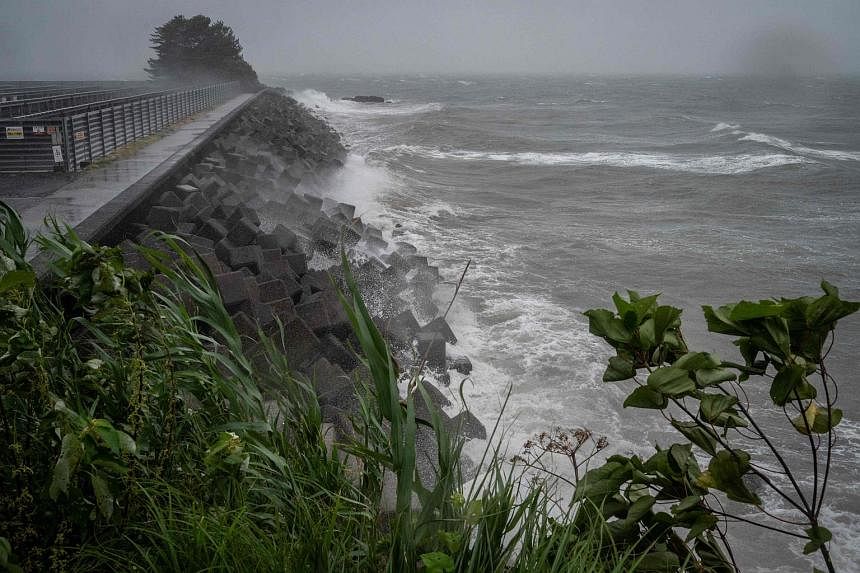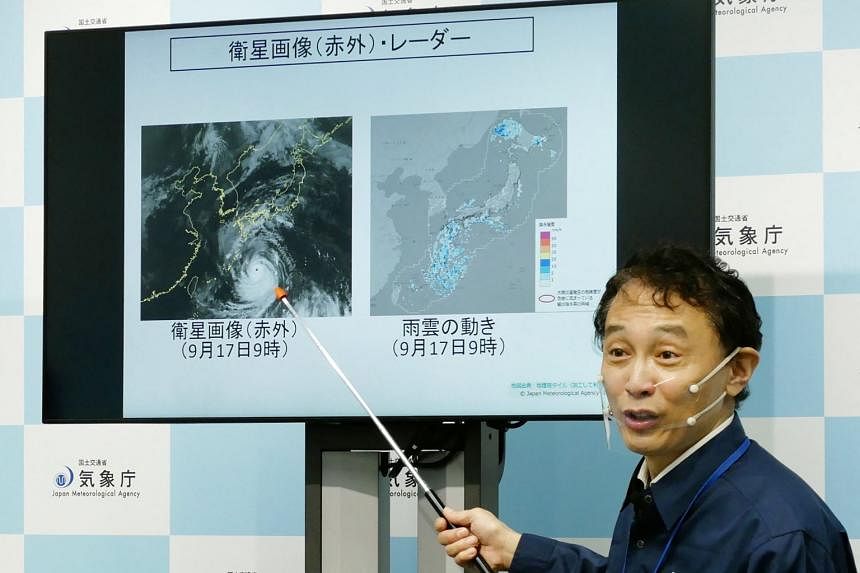TOKYO – Typhoon Nanmadol brought torrential rain and the risk of destructive landslides to Japan’s southernmost main island Sunday, as more than 8 million people were ordered to evacuate and seek shelter.
The storm officially made landfall at around 7pm local time (6pm Singapore time) as its eyewall – the most destructive part of a storm – arrived near Kagoshima city, the Japan Meteorological Agency (JMA) said.
It was packing gusts of up to 234kmh and had already dumped up to 500mm of rain in less than 24 hours on parts of south-western Kyushu region.
Some areas of the southern island, Kyushu, were expected to receive 20 inches of rain or more, an amount not seen in the area in decades, officials said.
A total of nearly 8 million people in about 3.7 million households were ordered to evacuate from areas in southern and western Japan, according to NHK, the national broadcaster.
At least 20,000 people were spending the night in shelters in Kyushu’s Kagoshima and Miyazaki prefectures, where the JMA has issued a rare “special warning” – an alert that is given only when it forecasts conditions seen once in several decades.
Kyushu’s entire bullet-train service was suspended, and hundreds of domestic flights were cancelled.
By Sunday evening, a small number of injuries had been reported but no deaths.
Meteorological officials warned that the storm could be more damaging than
Typhoon Jebi, which killed about a dozen people in Japan in 2018, and Typhoon Hagibis, the strongest storm to hit the country’s mainland in decades, which caused widespread flooding and landslides in 2019 and killed about 100 people.
They sought to drive home their concerns about the weather system throughout the weekend.
“Please stay away from dangerous places, and please evacuate if you feel even the slightest hint of danger,” Prime Minister Fumio Kishida tweeted after convening a government meeting on the storm.
“It will be dangerous to evacuate at night. Please move to safety while it’s still light outside.”
The JMA has warned that the region could face unprecedented danger from high winds, storm surges and torrential rain and called the storm “very dangerous”.
“Areas affected by the storm are seeing the sort of rain that has never been experienced before,” Mr Hiro Kato, head of the Weather Monitoring and Warning Centre, told reporters on Sunday.
“Especially in areas under landslide warnings, it is extremely probable that some kinds of landslides are already happening."
By Sunday evening, utility companies said nearly 200,000 homes across the region were without power.
Trains, flights and ferry runs were cancelled until the passage of the storm, and even some convenience stores – generally open all hours and considered a lifeline in disasters – were shutting their doors.
“The southern part of the Kyushu region may see the sort of violent wind, high waves and high tides that have never been experienced before,” the JMA said on Sunday, urging residents to exercise “the highest caution possible”.
The storm, which has weakened slightly as it approached land, is expected to turn north-east and sweep up across Japan’s main island through early Wednesday.
Japan is currently in typhoon season and faces around 20 such storms a year, routinely seeing heavy rain that causes landslides or flash floods. AFP, NYTIMES





